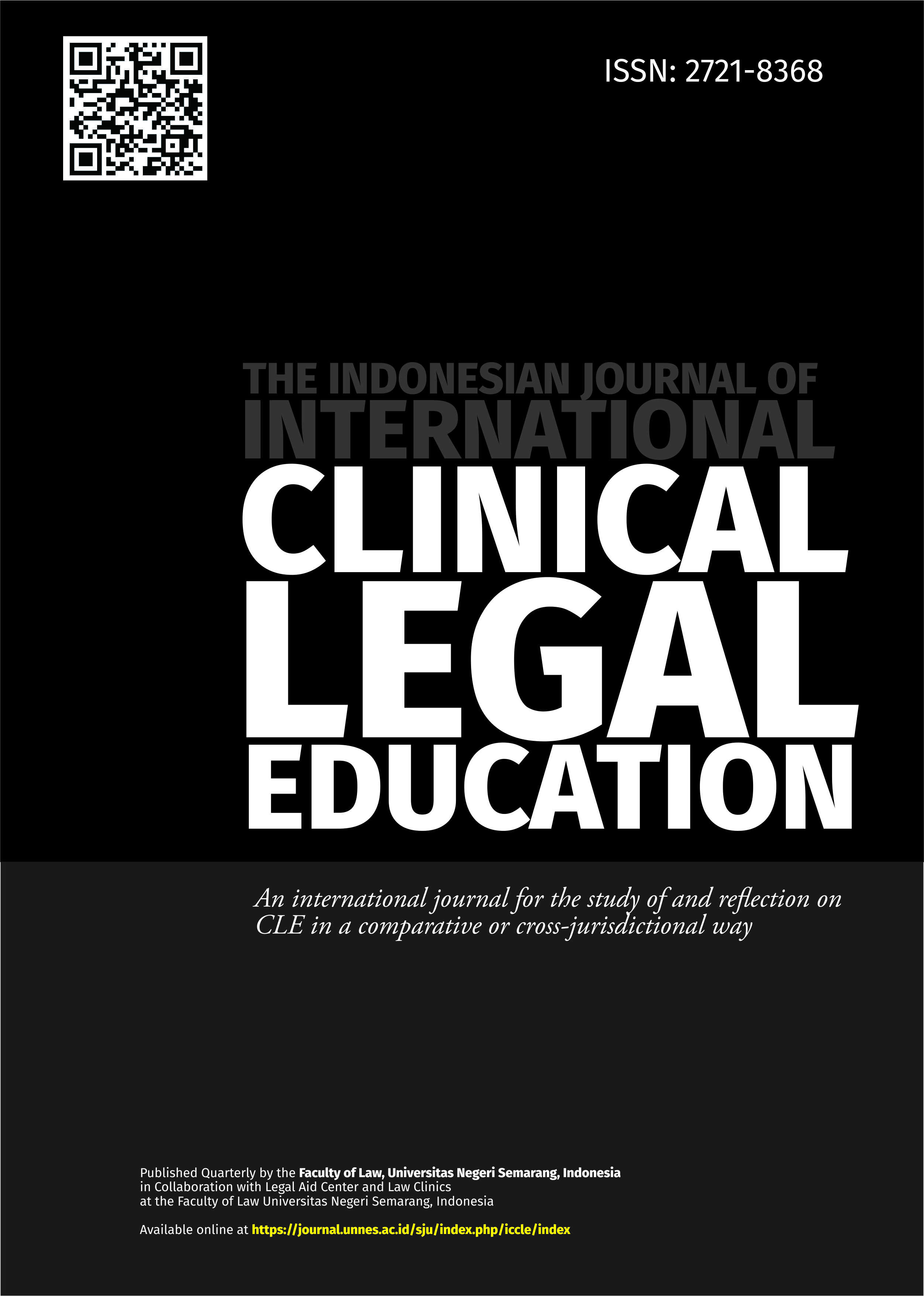The Mainstreaming of the Concept of Legal Protection for Child Labor in Indonesia based on ILO Conventions
Main Article Content
Abstract
This study delves into the mainstreaming of the concept of legal protection for child labor in Indonesia, drawing insights from the International Labour Organization (ILO) Conventions. Child labor remains a global challenge, impacting the physical, psychological, and social development of children who engage in work during their school years. Beyond mere employment for wages, the issue involves elements of exploitation, hazardous working conditions, and restricted access to education. Certain forms of child labor even qualify as the most intolerable, necessitating urgent attention. The primary objective of this research is to analyze, identify, and compare the legal protection mechanisms for child labor in Indonesia based on the ILO Conventions. Employing a normative legal study methodology, the research employs a dual approach, combining comparative law study and statute analysis. By scrutinizing the legal protection practices within the context of Indonesian law and international law, the study aims to shed light on disparities, commonalities, and potential areas for improvement. Conducting an in-depth examination without relying on fieldwork, the study utilizes a literature review and document study, drawing on various sources from both online and printed materials. Through this comprehensive exploration, the research seeks to contribute to a nuanced understanding of the mainstreaming of legal protections for child labor in Indonesia. By highlighting key findings, this study aims to inform policy discussions, foster awareness, and facilitate the development of more effective measures to safeguard the rights and well-being of children involved in labor activities in the Indonesian context.
Article Details

This work is licensed under a Creative Commons Attribution-ShareAlike 4.0 International License.
The copyrights of the article in Indonesian J. Int'l Clinical Leg. Educ. is on the Author(s), however, before publishing, it is required to obtain written confirmation from Author(s) in order to ensure the originality (Author Statement of Originality). The statement is to be signed by at least one of the authors who have obtained the assent of the co-author(s) where applicable. This work licensed under a Creative Commons Attribution-ShareAlike 4.0 International (CC BY-SA 4.0). All writings published in this journal are personal views of the authors and do not represent the views of this journal and the author's affiliated institutions.
References
Anggriani, Errika Putri. "Policy on Reducing Child Labor as the Elimination of the Worst Forms of Child Labor." Unnes Law Journal 6, no. 1 (2020): 1-20.
Bagaskara, Sewitra, and Dyah Lituhayu. "Formulasi Kebijakan Perlindungan Anak di Kota Semarang." Journal of Public Policy and Management Review 6, no. 3 (2017): 104-114.
Bessell, Sharon. "Child labor in Indonesia." The World of Child Labor. (London: Routledge, 2014), pp. 898-903.
Bessell, Sharon. "The politics of child labour in Indonesia: global trends and domestic policy." Pacific Affairs (1999): 353-371.
Bix, Brian H. "John Austin and constructing theories of law." The Legacy of John Austin's Jurisprudence. (Dordrecht: Springer Netherlands, 2012), pp. 1-13.
Daming, Saharuddin, and Tirta Aria Tiarani. "Perlindungan Hukum dan Hak Asasi Manusia Terhadap Pekerja Anak di Bawah Umur Pada Industri Rumahan." Yustisi 8, no. 2 (2021): 113-130.
Dennis, Michael J. "The ILO convention on the worst forms of child labor." American Journal of International Law 93, no. 4 (1999): 943-948.
Efendi, Jonaedi, and Johnny Ibrahim. Metode Penelitian Hukum: Normatif dan Empiris. (Jakarta: Prenada Media, 2018).
Faridah, Siti, and Laila Afiyani. " Child Labor Issues and Relations with Human Rights [Isu Pekerja Anak dan Hubungan dengan Hak Asasi Manusia]." Lex Scientia Law Review 3, no. 2 (2019): 163-176.
ILO - IPEC, Serikat Pekerja/Serikat Buruh dan Pekerja Anak. (Jakarta: Organisasi Perburuhan Internasional, 2009).
Izziyana, Wafda Vivid. "Perlindungan Hukum Bagi Pekerja Anak di Indonesia." Legal Standing: Jurnal Ilmu Hukum 3, no. 2 (2019): 103-115.
Kelsen, Hans. "On the Basic Norm." California Law Review 47, no. 1 (1959): 107-110.
Kusumawati, Mustika Prabaningrum. "Tinjauan Yuridis Perlindungan Hukum Pekerja Anak (Ditinjau dari Sudut Pandang Hukum Ketenagakerjaan dan HAM)." Literasi Hukum 3, no. 1 (2019): 39-51.
Marzuki, Peter Mahmud. Penelitian Hukum. (Jakarta: Kencana Prenada Media, 2005).
Nesi, Giuseppe, Luca Nogler, and Marco Pertile. Child labour in a globalized world: a legal analysis of ILO action. (London: Routledge, 2016).
Noguchi. "ILO Convention No. 182 on the worst forms of child labour and the Convention on the Rights of the Child." The International Journal of Children's Rights 10, no. 4 (2002): 355-369.
Nursiam, Siti Fijriah. "Peranan International Labour Organization (ILO) Melalui International Programme on The Eliminating of Child Labour (IPEC) dalam Menanggulangi Pekerja Anak di Indonesia." Global Political Studies Journal 1, no. 1 (2017): 1-24.
Organizzazione internazionale del lavoro, and UNICEF. Child labour: Global estimates 2020, trends and the road forward. (ILO and UNICEF, 2021).
Satriawan, Dodi. "Pekerja Anak Sektor Informal di Indonesia: Situasi Terkini dan Tantangan ke Depan (Analisis Data Susenas 2019)." Jurnal Ketenagakerjaan 16, no. 1 (2021): 1-12.
Setiawan, Sarno, et al. "Community Empowerment on Establishment of Friendly-Village for Women and Children." Indonesian Journal of Advocacy and Legal Services 1, no. 1 (2019): 5-22.
Sudarto, Aye, Muhamad Bisri Mustofa, and Anas Malik. "Economic Exploitation of Children: Returning Child Labor to the World of Education Through Interpersonal Communication Towards Equal Education." HUMANISMA: Journal of Gender Studies 6, no. 2 (2022): 212-225.
Sulistiyono, Tri, et al. "Legal Protection to Child Labour: The Effectiveness of National Criminal Law and International Law Instrument (A Case Study of Indonesia and China)." International Journal of Business, Economics and Law 18, no. 4 (2019): 45-52.
Tjahjanto, Eka. “Implementasi Peraturan Perundang–Undangan Ketenagakerjaan Sebagai Upaya Perlindungan Hukum Terhadap Eksploitasi Pekerja Anak”. Thesis. (Semarang: Universitas Diponegoro, 2008).
Utama, Resa Surya, and Dwini Handayani. "Pekerja anak di Indonesia: Peran penawaran dan permintaan ketenagakerjaan." Jurnal Ekonomi Kuantitatif Terapan 13, no. 1 (2020): 145-157.
White, Ben, Rebecca Elmhirst, and Ratna Saptari. "Constructing child labour: Attitudes to juvenile work in Indonesia, 1900-2000." Labour in Southeast Asia: Local processes in a globalised world (2004): 77-105.
